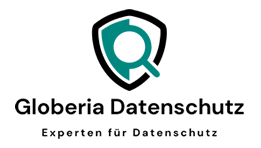Introduction and importance of risk reduction:
Risk mitigation is an essential part of the Data Protection Impact Assessment (DPIA). The aim is to minimise the identified risks to the rights and freedoms of data subjects and to ensure that the processing of personal data is carried out in accordance with the General Data Protection Regulation (GDPR). Here are the different types of risk mitigation measures and their implementation explained in detail:
Technical measures to reduce risks:
- Encryption:
- Data protection: Encryption is an effective method to protect the confidentiality and integrity of personal data. It ensures that data can only be read or modified by authorized persons.
- Implementation: Encryption should be used both when transmitting and storing data. Examples include SSL/TLS for data transmission and AES for storage.
- Pseudonymization:
- Reducing the risk of identification: Pseudonymisation reduces the risk of identification of data subjects by changing personal data in such a way that it can no longer be assigned to a specific person without additional information.
- Implementation: Pseudonymization can be achieved by using surrogate identifiers or hashing algorithms that replace the direct identifiers with pseudonyms.
- Access controls:
- Restricting data access: Access controls ensure that only authorized persons have access to personal data. This protects the data from unauthorized access and misuse.
- Implementation: Access controls can be achieved by implementing authentication and authorization mechanisms, such as passwords, two-factor authentication and role-based access control.
- Data security and backup:
- Ensuring availability: Regular data backups are important to ensure data availability in the event of data loss or corruption.
- Implementation: Backups should be created regularly and stored securely to enable data recovery in an emergency.
- Monitoring and logging:
- Traceability of data processing: Monitoring and logging mechanisms help to monitor data processing and detect and analyze potential security incidents.
- Implementation: Monitoring and logging systems should be implemented to log and regularly review all access and changes to personal data.
Organisational measures to reduce risk:
- Privacy policies and procedures:
- Establish clear rules: Data protection policies and procedures establish clear rules for handling personal data and ensure that all employees understand and comply with data protection requirements.
- Implementation: Data protection policies and procedures should be documented, regularly reviewed and updated to comply with current data protection requirements.
- Training and awareness:
- Raising data protection awareness: Training and awareness-raising activities help to increase employee awareness of data protection risks and ensure that they understand and follow data protection policies and procedures.
- Implementation: Regular training and awareness-raising activities should be carried out for all employees, especially those who regularly work with personal data.
- Data Protection Officer:
- Advice and monitoring: A data protection officer (DPO) advises the controller and employees on data protection issues and monitors compliance with data protection regulations.
- Implementation: The DPO should be involved in all relevant data protection issues and prepare regular reports on the status of data protection.
- Data Protection Impact Assessments (DPIA):
- Regular implementation: Regular DPIAs help to assess the risks of data processing and take appropriate measures to mitigate the risks.
- Implementation: A DPIA should be carried out before new processing operations are introduced or when existing processing operations change significantly.
Relevant articles of the GDPR:
- Article 35: Data protection impact assessment
- Article 32: Security of processing
- Recital 84: Scope of the DPIA
- Recital 90: Implementation of the DPIA
Practical examples of risk reduction measures:
- Encryption of healthcare data: A medical research institute implements end-to-end encryption to protect the confidentiality and integrity of sensitive healthcare data.
- Access controls in a bank: A bank implements role-based access controls to ensure that only authorized employees have access to sensitive financial data.
- Training in an e-commerce company: An e-commerce company conducts regular data protection training for all employees to increase awareness of data protection risks and ensure compliance with data protection policies.
Summary:
Risk mitigation is an essential part of the data protection impact assessment (DPIA). It includes both technical and organizational measures aimed at minimizing the identified risks to the rights and freedoms of data subjects. Technical measures such as encryption, pseudonymization and access controls protect the confidentiality, integrity and availability of data. Organizational measures such as data protection policies, training and the involvement of a data protection officer ensure that data protection requirements are understood and adhered to. Implementing these measures will ensure the security of personal data and ensure compliance with the GDPR.


